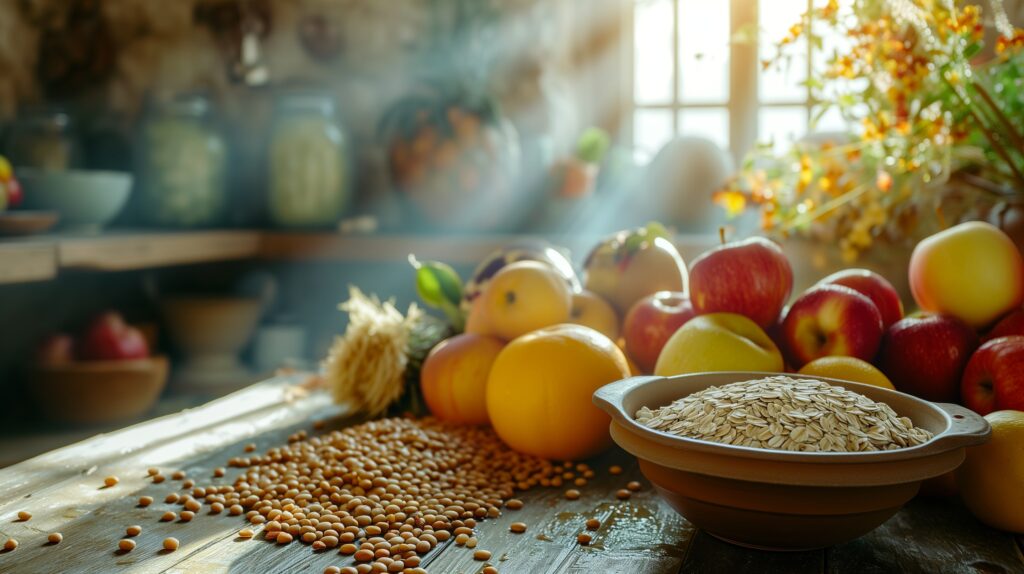Welcome to a greener side of health where we embrace the power of plant-based eating for a robust heart and vibrant life! In today’s fast-paced world, it’s more important than ever to nourish our bodies with the right foods. Plant based eating – a diet rich in fruits, vegetables, legumes, and whole grains is not just a trend; it’s a pathway to essential nutrients, potent antioxidants, and a reduced risk of heart disease. Let’s dive into the lush world of plant power and discover how simple dietary changes can lead to significant improvements in heart health and overall well-being. Don’t forget to track your journey to a healthier heart with the My Heartlet app, your digital companion for heart-centric wellness.
Table of Contents
Embrace Nature’s Bounty!
Nature offers a cornucopia of delicious and nutritious foods that can revolutionize our health. Fruits and vegetables, brimming with vitamins, minerals, and fiber, are the cornerstone of any heart-healthy diet. According to the American Heart Association, a diet rich in a variety of fruits and vegetables can lower blood pressure, reduce the risk of heart disease and stroke, and prevent some types of cancer.
Dive into Diversity
Incorporating a rainbow of fruits and vegetables ensures you receive a wide spectrum of nutrients. Each color represents different antioxidants and phytochemicals that support heart health. For example, lycopene in tomatoes and anthocyanins in berries have been linked to a reduction in heart disease risk.
Fresh, Frozen, or Canned
The beauty of fruits and vegetables lies in their versatility. Whether fresh, frozen, or canned, they retain their nutritional value and can be enjoyed year-round. Studies have shown that frozen and canned produce can be just as nutritious as fresh, making them a convenient and affordable option for many people.
Daily Recommendations
The USDA’s MyPlate guidelines suggest filling half your plate with fruits and vegetables at each meal. This simple visual cue makes it easier to incorporate a variety of plant-based foods into your daily diet.
Heart-Healthy Plant Power!
The heart is an organ that thrives on the right fuel, and plant-based foods are its best friend. Whole grains, for instance, are associated with lower cholesterol levels and a decreased risk of heart disease. Foods like oatmeal, brown rice, and quinoa are not only versatile but also packed with heart-friendly fiber.
The Antioxidant Advantage
Antioxidants found in plant-based foods, such as vitamin C in oranges and flavonoids in apples, help fight inflammation and protect the heart from oxidative stress. The Mayo Clinic supports the role of antioxidants in reducing heart disease risk factors.
Fiber: The Heart’s Broom
Fiber plays a crucial role in heart health by sweeping cholesterol out of the body and regulating blood sugar levels. A diet high in fiber from whole plant foods can significantly improve heart health, as outlined by resources like the Harvard T.H. Chan School of Public Health.
Omega-3 Fatty Acids
While often associated with fish, omega-3 fatty acids can also be found in plant sources such as flaxseeds, chia seeds, and walnuts. These healthy fats are linked to lower rates of heart disease, as highlighted by research on plant-based omega-3s.
Legumes & Grains for Vigor!
Legumes like beans, lentils, and chickpeas are powerhouses of nutrition. They are excellent sources of protein, fiber, vitamins, and minerals. Integrating legumes into your diet can improve heart health by reducing blood pressure and cholesterol levels, as evidenced by studies on dietary pulses.
Mix and Match for Balance
Combining legumes with grains can create a complete protein profile, essential for overall health and especially beneficial for those on a plant-based diet. This synergy provides the body with all the essential amino acids it needs.
The Whole Grain Goodness
Whole grains are the seeds of plants and contain all three parts of the kernel, ensuring you get the full range of nutrients. They have been consistently shown to contribute to heart health, as documented by the Whole Grains Council.
Tips for Incorporating Legumes and Grains
- Experiment with different types of legumes in salads, soups, and stews.
- Use whole grains as a base for bowls topped with a variety of vegetables.
- Snack on roasted chickpeas for a crunchy, protein-packed treat.
Transitioning to a plant-based diet brimming with fruits, vegetables, legumes, and whole grains can be a delightful adventure for your palate and a boon for your heart health. By embracing nature’s bounty, harnessing the heart-healthy power of plants, and enjoying legumes and grains for vigor, you’re taking proactive steps towards a healthier, happier heart. Remember to utilize tools like the ‘My Heartlet’ app to track your progress and stay motivated on your journey to optimal health. Eat wisely, live joyfully, and let your heart flourish with every plant-powered bite!
